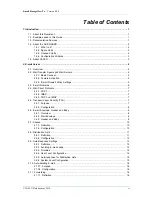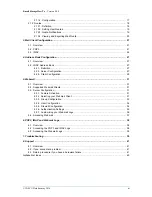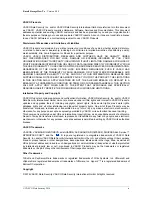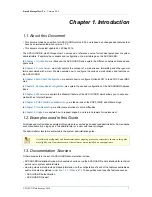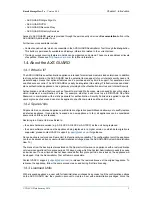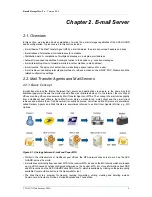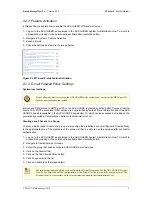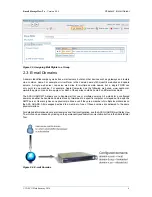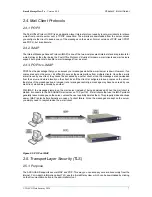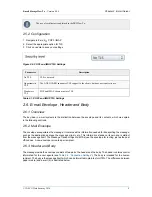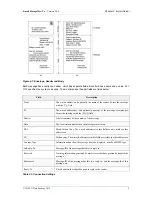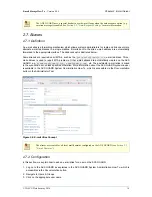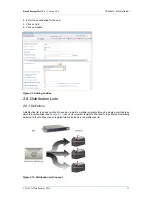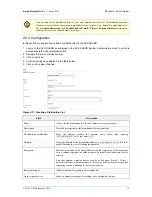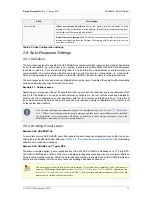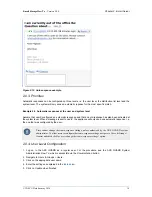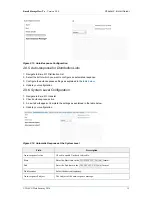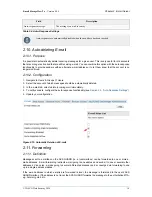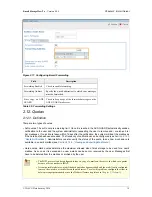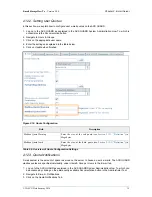
E-mail Storage How To - Version 8.0.0
© VASCO Data Security 2014
4
Chapter 2. E-mail Server
2.1. Overview
In this section, we provide a basic explanation of e-mail, the e-mail storage capabilities of the AXS GUARD
and its configuration. Topics covered in this section include:
• E-mail basics: The Mail Transfer Agent (MTA), e-mail domains, the e-mail envelope, headers and body.
• E-mail aliases: Alternative e-mail addresses for a mailbox.
• Distribution Lists: A compilation of multiple addressees in a single e-mail address.
• Automatic response capabilities: Automatic replies to the sender, e.g. vacation messages.
• E-mail forwarding: How to forward e-mails to another mailbox (e-mail address).
• E-mail quotas: The amount of authorized e-mail storage space reserved for a user.
• E-mail retrieval: Available protocols and methods to retrieve e-mails, such as IMAP, POP, Webmail and the
related configuration settings.
2.2. Mail Transfer Agents and Mail Servers
2.2.1. Basic Concept
E-mails travel across the Internet between their source and destination via servers, in the same way that
traditional paper mail travels the world via post offices (as illustrated below). On the Internet, the role of post
offices or sorting offices are assumed by Mail Transfer Agents or MTAs. The concept of e-mail varies slightly
from a traditional post office in that a Mail Server stores e-mails for an e-mail client and the e-mail client
retrieves and delivers them. Traditional mail is usually delivered, not retrieved. Mail Servers are sometimes
called Delivery Agents and Mail Clients are sometimes referred to as Mail User Agents (MUAs), e.g. MS
Outlook.
Figure 2.1. Analogy between E-mail and Paper MTA
• Similar to the infrastructure of traditional post offices, the MTA network links servers, such as the AXS
GUARD, across the world.
• E-mails are sent directly from a sender MTA to the receiver MTA, based on the MX records which are looked
up via a DNS request, unless configured otherwise on the sender MTA. For more information about DNS
and MX records, see the AXS GUARD Public DNS How To, which is available by clicking on the permanently
available Documentation button in the Administrator tool.
• The Mail Client is a program for viewing, replying, forwarding, sorting, creating and deleting e-mails.
Common mail clients are Outlook, Outlook Express and Thunderbird.


